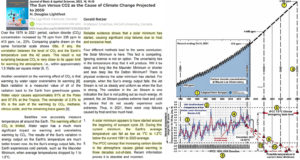by M. Schellenberg, Oct 4, 2022 in ClimateChangeDispatch
Over the last several weeks, many mainstream news media outlets have claimed that hurricanes are becoming more expensive, more frequent, and more intense because of climate change. [bold, links added]
• The Financial Timesreported that “hurricane frequency is on the rise.”
• The New York Timesclaimed, “strong storms are becoming more common in the Atlantic Ocean.”
• The Washington Postsaid, “climate change is rapidly fueling super hurricanes.”
• ABC Newsdeclared, “Here’s how climate change intensifies hurricanes.”
• Both the FT and NY Times showed graphs purporting to show rising hurricane frequency using data from the U.S. government’s National Oceanic and Atmospheric Administration (NOAA).
All those claims are false.
The increasing cost of hurricane damage can be explained entirely by more people and more property in harm’s way. Consider how much more developed Miami Beach is today compared to a century ago. Once you adjust for rising wealth, there is no trend of increasing damage.
Claims that hurricanes are becoming more frequent are similarly wrong.
“After adjusting for a likely undercount of hurricanes in the pre-satellite era,” writes NOAA, “there is essentially no long-term trend in hurricane counts. The evidence for an upward trend is even weaker if we look at U.S. landfalling hurricanes, which even show a slight negative trend beginning from 1900 or from the late 1800s.”
What’s more, NOAA expects a 25% decline in hurricane frequency in the future.
…


